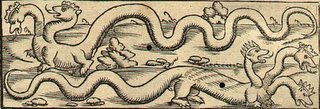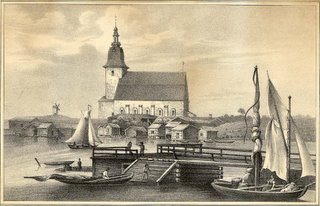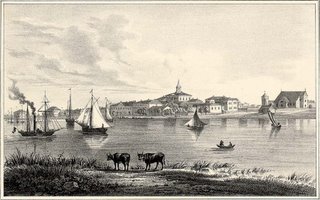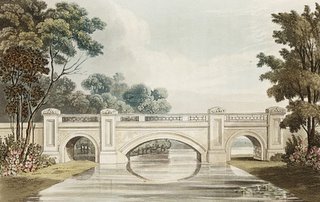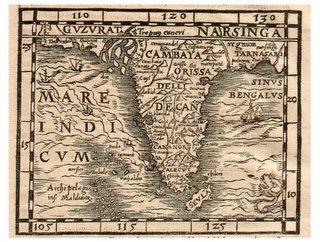
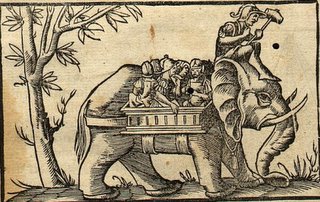


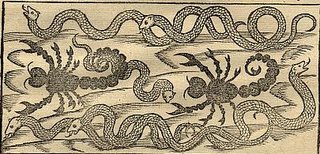

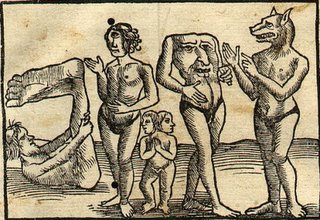
"This part is based on Pliny. In the medieval mappaemundi, lurking at the edges of the world were the monstrous races. The text contains the description of some of these species: the Cyclops (giants with one enormous eye in the middle of the forehead); the Blemmyai (they were headless and had their faces on their chests); the Sciopods (although one-legged, were very swift and used their single large feet as an umbrella to shade themselves from the sun). But, most importantly, the Cynocephali (Cynocephales, Dog-heads), one of the best known monstrous races. They had the body of a man and the head of a dog.
According to Pliny, they lived in the mountains of India and barked to communicate. They lived in caves, wore animal skins, hunted very succesfully, and used javelins, bows and swords. Other sources that circulated in the middle ages picture the Cynocephali much more frighteningly, with enormous teeth and breathing fire. Several sources make them cannibals. All sources emphasize that they combine the natures of man and beast."
Eminent German cartographer, Hebrew scholar, ex-Franciscan Monk, Lutheran, traveller, polyglot, translator, mathematician and humanist, Sebastian Münster
(1488-1552) is most renowned for his six volume
opus,
Cosmographia, first issued in 1544.
An indication of the success and respect this work was given comes from the 40 new editions issued over the next 80 years. Münster plagiarized hand-over-fist to supplement his direct knowledge. The works of Aristotle, Ptolemy, Pliny and Strabo were consulted and direct quotes were at times inserted into his latin book of world knowledge.
Obviously, as reflected in a couple of the fantastical images here, there was a discrete lack of scientific integrity about
Cosmographia, but the mapping was up to date and is said to have revived European interest in cartography. The volume on Asia ostensibly deals with India, describing the history, geography, customs, caste system, flora and fauna and purported monsters.
Since finding/uploading the above images I've found all 247 woodcuts (some by Hans Holbein of
Danse Macabre fame) from the 6 volume work online, but they're mostly small images. I'll sort through them some time and make up another Münster post. Too many Münster monsters is never enough.
